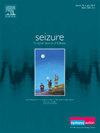耐药性癫痫的脑深部刺激目标:有效性和反应预测因素的系统回顾和荟萃分析
IF 2.7
3区 医学
Q2 CLINICAL NEUROLOGY
引用次数: 0
摘要
目的 丘脑前核(ANT)是美国食品及药物管理局(FDA)批准用于治疗耐药性癫痫(DRE)的唯一脑深部刺激(DBS)靶点。有报道称海马(HC)和中央核(CMN)是治疗耐药癫痫的潜在脑深部刺激靶点。本研究旨在评估接受 DBS 治疗的一般 DRE 患者以及 ANT、HC 和 CMN DBS 靶点患者的疗效和反应预测因素。方法在 2000 年 1 月 1 日至 2020 年 6 月 29 日期间,在 PubMed、SCOPUS 和 Cochrane Central Register of Controlled Trials (CENTRAL) 电子数据库中进行了系统检索。研究纳入了接受 DBS 治疗且随访至少三个月的 DRE 患者。对具有可用 IPD 的 DBS 研究进行了患者个体数据 (IPD) meta 分析。癫痫发作频率减少≥50%即为应答。将有反应组与无反应组在人口统计学、癫痫/发作特征、磁共振成像结果、DBS靶点和使用时间等方面进行比较。结果39项研究共纳入了296名患者(ANT:69%;HC:11%;CMN:21%)。有反应的患者组有 209 人(70.6%)。全身性癫痫发作患者的应答率明显高于局灶性癫痫发作患者(93.2% vs 63.9%;P < 0.001)。以 CMN(83.9%)和 HC(77.4%)为 DBS 靶点的反应明显高于以 ANT(65.5%)为靶点的反应(p = 0.014)。反应与使用 DBS 的时间长短也有明显关系(p = 0.008)。病变 MRI 患者的应答率(76.7%)高于非病变 MRI 患者(66.7%),但差异无统计学意义(p = 0.134)。有反应者和无反应者在年龄、性别、癫痫病因、局灶性癫痫发作的起始区以及既往使用过 VNS 等方面均无显著差异。包括癫痫发作类型、磁共振成像结果、DBS靶点和DBS持续时间在内的二元逻辑回归显示,在控制了混杂因素后,DBS持续时间是唯一能显著预测反应的因素(调整后OR 1.061; 95 % CI 1.019-1.106; p = 0.005)。关于 DBS 靶点,有症状病因的患者使用 HC 或 CMN 靶点的应答率明显高于 ANT 靶点(p = 0.003)。在非病变 MRI 患者中,CMN 靶点的反应率明显高于其他两个靶点(p = 0.008)。除局灶性癫痫发作外,DBS 还具有治疗全身性癫痫发作的潜力。虽然 ANT 是目前最常用且唯一获准用于 DRE 的 DBS 靶点,但 CMN 和 HC 也是具有较高癫痫控制潜力的替代靶点。以 HC 或 CMN 为靶点时,症状性病因患者的癫痫发作明显减少。研究显示,CMN-DBS 在治疗非lesional MRI 患者方面效果明显。尽管ANT在研究中很突出,但我们的研究结果表明,CMN和HC的治疗效果很好,这强调了今后需要进行更大规模的比较临床试验,以更好地了解不同DBS靶点的疗效。本文章由计算机程序翻译,如有差异,请以英文原文为准。
Deep brain stimulation targets in drug-resistant epilepsy: Systematic review and meta-analysis of effectiveness and predictors of response
Purpose
Anterior nucleus of the thalamus (ANT) is the only deep brain stimulation (DBS) target that is approved by the FDA for treatment of drug-resistant epilepsy (DRE). Hippocampus (HC) and centromedian nucleus (CMN) have been reported as potential DBS targets for DRE. This study aimed to assess the effectiveness and predictors of response among DRE patients treated with DBS in general and among ANT, HC and CMN DBS-targets.
Methods
A systematic search was executed on PubMed, SCOPUS and the Cochrane Central Register of Controlled Trials (CENTRAL) electronic databases between Jan 1, 2000 and June 29, 2020. Patients with DRE who underwent DBS treatment with at least three months of follow-up were included. Individual patient data (IPD) meta-analysis was conducted on DBS studies with available IPD. Response was defined as ≥50 % reduction in seizures frequency. Responders group was compared with non-responders group in terms of demographics, epilepsy/seizure characteristics, MRI findings, and DBS targets and duration of use. Subsequently, predictors of response to different DBS targets were investigated.
Results
Thirty-nine studies with a total of 296 patients (ANT: 69 %, HC: 11 %, CMN: 21 %) were included. The responders group constituted of 209 patients (70.6 %). The response was significantly higher in patients with generalized seizures compared to those with focal seizures (93.2% vs 63.9 %; p < 0.001). Response was significantly higher with CMN (83.9 %) and HC (77.4 %) compared with ANT (65.5 %) as DBS targets (p = 0.014). Response was also significantly associated with longer duration of DBS use (p = 0.008). The responder rate was higher among the patients with lesional MRIs (76.7 %) than those with non-lesional MRIs (66.7 %), but with no statistically significant difference (p = 0.134). Age, gender, epilepsy etiology, onset zone of focal seizures, and previous use of VNS had no significant differences between the responders and non-responders. A binary logistic regression including the seizure type, MRI findings, DBS targets, and DBS duration showed, after controlling for confounders, that the duration of DBS use was the only significant predictor of response (adjusted OR 1.061; 95 % CI 1.019–1.106; p = 0.005). Regarding DBS targets, the response rate in patients with symptomatic etiology was significantly higher with HC or CMN targets than the ANT (p = 0.003). In patients with non-lesional MRI, response rate was significantly higher with the CMN target compared to the other two targets (p = 0.008).
Conclusion
DBS proves to be effective in DRE, with progressive success upon longer treatment and possibility of improving quality of life. In addition to focal seizures, DBS has potential for treating generalized seizures as well. While the ANT stands as the most utilized and only approved DBS target for DRE, CMN and HC are alternative targets with high seizure control potential. Patients with symptomatic etiology showed significant seizure reduction when HC or CMN were targeted. Studies revealed noticeable effectiveness of CMN-DBS in treating patients with non-lesional MRI. Despite ANT prominence in research, our findings suggest promising outcomes with CMN and HC, emphasizing the need for future larger-scale comparative clinical trials to better understand the efficacy of different DBS targets.
求助全文
通过发布文献求助,成功后即可免费获取论文全文。
去求助
来源期刊

Seizure-European Journal of Epilepsy
医学-临床神经学
CiteScore
5.60
自引率
6.70%
发文量
231
审稿时长
34 days
期刊介绍:
Seizure - European Journal of Epilepsy is an international journal owned by Epilepsy Action (the largest member led epilepsy organisation in the UK). It provides a forum for papers on all topics related to epilepsy and seizure disorders.
 求助内容:
求助内容: 应助结果提醒方式:
应助结果提醒方式:


